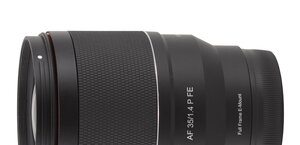Panasonic Lumix G 12-60 mm f/3.5-5.6 ASPH. POWER O.I.S.
11. Summary
Please Support UsIf you enjoy our reviews and articles, and you want us to continue our work please, support our website by donating through PayPal. The funds are going to be used for paying our editorial team, renting servers, and equipping our testing studio; only that way we will be able to continue providing you interesting content for free. |
- - - - - - - - - - - - - - - - - - - - - - - - - - - - - - - - - - - - - - - - - - - - - - - -
Pros:
- solid, weather- resistant, very compact and handy casing,
- very good image quality in the frame centre for all focal lengths,
- imperceptible longitudinal chromatic aberration,
- negligible lateral chromatic aberration at longer focal lengths,
- lack of spherical aberration problems,
- moderate distortion at longer focal lengths,
- slight astigmatism,
- sensible coma correction,
- silent, quick and efficient autofocus.
Cons:
- not acceptable image quality on the edge of the frame at 35–60 mm focal lengths,
- huge lateral chromatic aberration near the maximum relative aperture at shorter focal lengths,
- significant vignetting,
- gigantic distortion at 12 mm for RAW files.
My summary of the test of the Olympus M.Zuiko Digital 12–50 mm f/3.5–6.3 ED EZ was far from enthusiastic. The lens was too slow for me, especially taking the offered focal range into account, and its optical performance was far from perfect. The Panasonic, tested here, compares very favourably – it is faster, aperture-wise and its focal range is wider; additionally it provides images with better resolution than those coming from the Olympus. Taking into account the fact that the Panasonic is only slightly more expensive than the Olympus I would choose the newer model without a moment of doubt.






